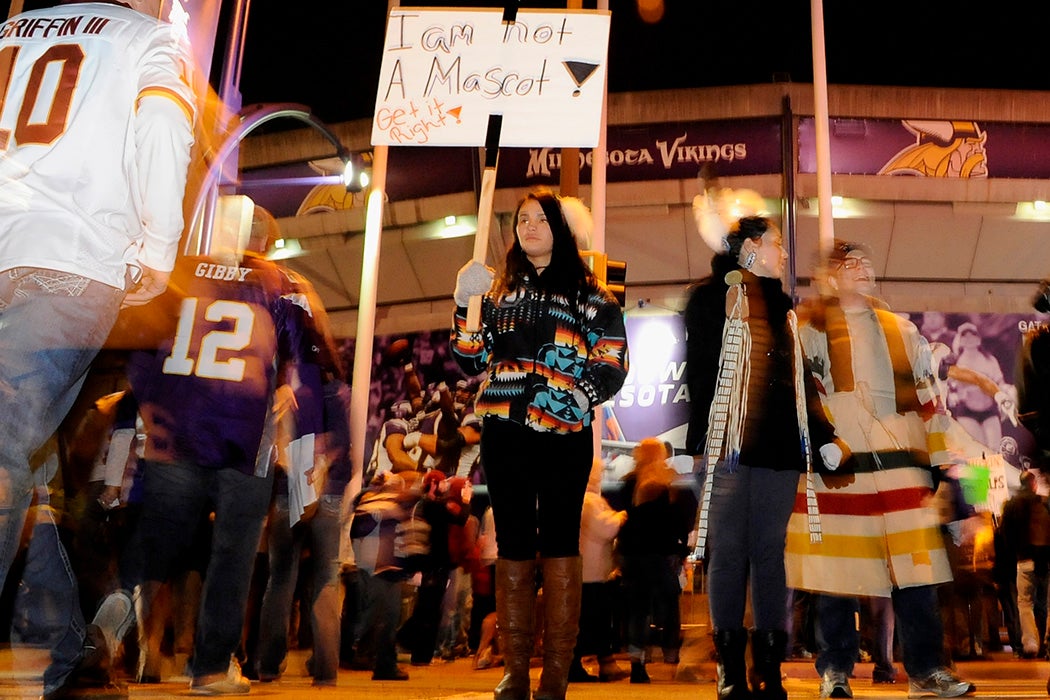After decades of protest, the NFL team from Washington, D.C., has announced that it will finally change its racist name and mascot. In defending the old identity, owner Dan Snyder claimed that the team’s founder, George Preston Marshall, chose it to honor early coach William Lone Star. One problem with that, as independent researcher Linda M. Waggoner writes, is that “Lone Star” was really a white man named William Henry Dietz. His story, like those of others who have been claimed as inspiration for problematic team names, sheds light on what’s at stake in changing these teams’ images.
Growing up in late nineteenth-century Wisconsin, Dietz was part of a white culture that reveled in stereotypes of Native Americans, particularly after the 1890 massacre at Wounded Knee, Waggoner writes. White people adopted the iconic “Indian warrior” as a symbol of natural masculinity. Organizations like the Boy Scouts encouraged boys to “play Indian”—hunting, fishing, and engaging in ceremonial gatherings.
Meanwhile, the U.S. government sought to eliminate actual Native cultures. The Carlisle Indian and Industrial School—famous for its founder’s injunction to “Kill the Indian in him; Save the Man”—called its football team the Red Men. “Men” was intended to emphasize the humanity of the student athletes, but white fans who cheered for the team unofficially nicknamed them the Redskins.
In 1907, Waggoner writes, Dietz enrolled in Carlisle and later joined the football team, claiming one quarter Oglala Sioux heritage. By that point, he had presented himself as a Sioux artist for years and performed “Indian songs and dances” at a Quaker college where he was studying. Eventually, his Sioux identity was questioned in public and in court, but he continued to claim it.
In 1933, Marshall hired Dietz as a coach, for a team then known as the Boston Braves. In what Waggoner suggests was an effort to tap into nostalgia for Carlisle football, he gave them the nickname they would carry on to Washington. Thanks to his connections in the world of Indian football, Dietz was able to recruit Native players—and then direct them to apply “war paint” to their faces before each game.
Weekly Newsletter
Strikingly, Dietz’s story is not the only one of its kind, as humanities scholar C. Richard King writes, describing a 2013 symposium on racist team mascots. King discusses Indigenous studies scholar Manley Begay’s research into “Yakoo,” the mascot of the North Quincy High School Red Raiders. The inspiration was an Armenian American dentist named Allan Yacubian, who “dressed as an imagined Indian.”
Meanwhile, the story of Louis Sockalexis, the supposed inspiration for the Cleveland professional baseball team’s name, sheds a different kind of light on team mascots. King describes sports management scholar Ellen Staurowsky’s findings that Sockalexis endured overt racism during his time on the team. The simultaneous white joy in “playing Indian” and discrimination against actual members of Native communities clearly saturates even the origin stories that teams with racist mascots like to point to, providing one more reason to make a change.







